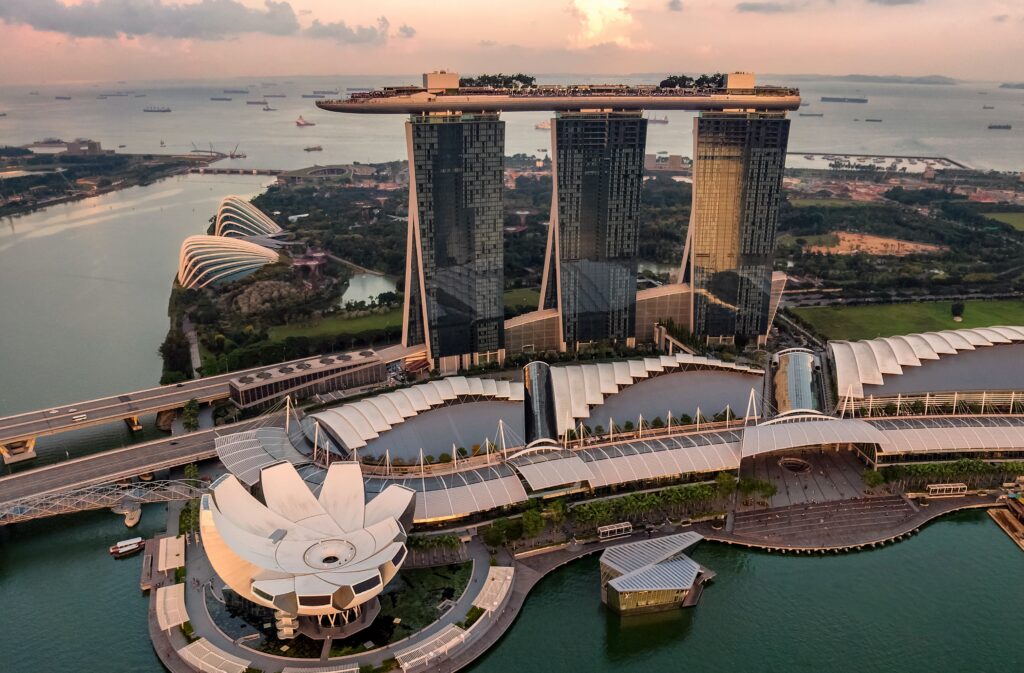
China’s marine industry grows as regulations change and markets open up

As European markets have eased off the boil, marine trends in Asia indicate growth potential and a new appetite for leisure boating. As seen in western markets, interest in smaller craft grew over the past two years as new-to-boating consumers entered the industry.
In the latest issue of Marine Industry News magazine, we looked at developments and new legislation in China and Singapore together with the GMBA.
China’s marine industry
GMBA representative: Godrey Zwygart
While leisure boating in China only started to expand ten to 12 years ago, several marinas are now in operation and there are more than 10,000 boats around the country. Though this is still ridiculously small compared to the size of the country, there is tremendous market potential.
The main sailing hub is located at Hainan Island in the south, with 13 marinas currently operating. Sanya is the southernmost city on Hainan Island, where boat numbers have jumped from 600 registered boats to 1,000 in two years. Since June 2020, Hainan has become a free trade zone (FTZ) and free trade port in the making.
Several new measures have also been taken such as scrapping yacht import duties along with the introduction of a cap on taxes for enterprises and individuals in the FTZ. This will definitely give an enormous boost to China’s marine industry and could be very appealing for foreign enterprises.
In terms of the boating demographic, boat ownership and boat usage is no longer the preserve of older entrepreneurs. Younger consumers are entering the boating market and represent a tremendous and ever-increasing potential for the future of China’s yacht market, especially in the smaller boats and watersports sector.
Remarkably, China now has the highest number of ultra high net worth individuals (UHNWI) with 799 billionaires according to Hurun Report. Thus there is an expectation that the number of potential superyacht buyers could rise and this sector of the market should grow accordingly.
China’s leisure marine market seems to be at a turning point. Awareness has grown following world race stopovers such as the Volvo Ocean Race and the Clipper Race. More recently, with prominent sailor Xu JinKun becoming the first Chinese sailor to participate in the Route du Rhum on an Open 60, which garnered even more interest.
However, China’s marine industry has been hampered by Covid-19 restrictions (with Sanya experiencing two long lockdowns in 2022 alone). Additionally, there are still many navigation restrictions as well as a number of legal limitations, especially for superyachts.
Although we are not expecting a sudden boom in the yachting scene in the next year or two, it is worth keeping an eye on China’s market potential, as the regulations will change step by step.
Singapore’s marine market
GMBA representative: YP Loke
In 2023, SG Marine Guide, an online platform for the Singapore boating community, announced the launch of the Singapore Yacht Festival (SYF), to take place at One°15 Marina Sentosa Cove from 27 to 30 April 2023.
The country is perceived to have managed the covid situation relatively well, helped by the strong social capital between the government and Singaporeans. As a result, Singapore has seen an influx of capital flight from around the region. The wealth management sector has attracted many UHNWI to set up family offices here, with one result of this being many more big yachts on the water.

During the pandemic when travel was restricted (and lockdowns at home enforced for a period) people developed a pent up need to embrace the great outdoors. Like most countries, this drove people to buy boats when the floodgates were finally lifted. Demand for all forms of watersports (and course instruction) surged.
A new demographic was also driven to the water – a younger crowd, looking for smaller trailer-sized boats (not that you can trailer boats in Singapore – they must be stored in dry stack).
With life returning to normal and borders open, boating is again competing with the full suite of alternative activities for the consumer’s leisure dollar. Anecdotal evidence is that the level of sales enquiries has dropped. However, most businesses remain busy and are still working to fulfilling existing commitments. Looking ahead, businesses expect trading conditions to be better than pre-covid times, but margins may be eroded by higher interest rates and inflationary pressure.
Many firms report a shortage of skilled manpower. Few Singaporeans are interested in working under the hot tropical sun, and boating has always been dependent on foreign labour, which is controlled by quota restrictions.
Businesses also report longer lead times for deliveries, resulting from global supply chain disruptions. With strong orders in their domestic markets, some manufacturers seem to have prioritised this over export markets which are more difficult to service, much to the disappointment of overseas distributors.
Despite uncertainty created by the risk of global tensions (Ukraine war, US/China trade tensions, global inflationary pressures, new covid mutations, climate change – to name a few) most marine businesses maintain a short-term optimistic outlook.
The post China’s marine industry grows as regulations change and markets open up appeared first on Marine Industry News.
